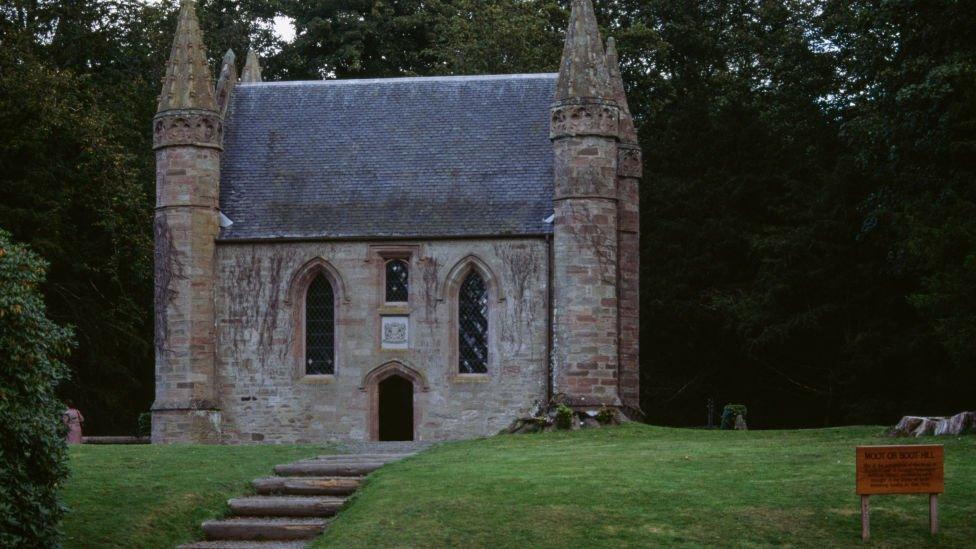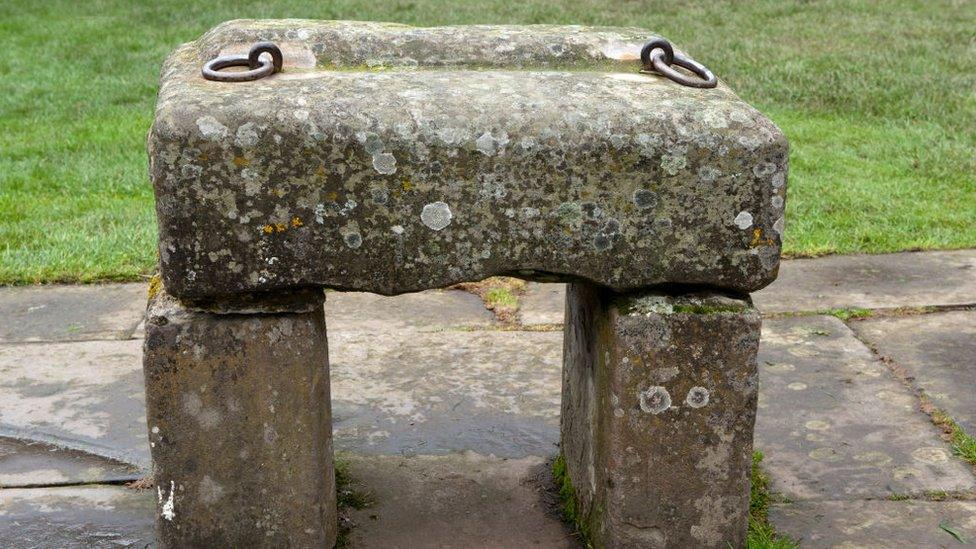King Charles' coronation: What is the Stone of Destiny and where did it come from?
- Published
- comments

Queen Elizabeth sat on a special chair, which included the stone, when she was crowned Queen
On 6 May, King Charles will be crowned in an historic ceremony that will involve a special rock called the Stone of Scone.
It's also known as the Stone of Destiny, and has been used for hundreds of years in English coronation ceremonies, as well as Scottish ones before that.
The stone was taken by English armies from Scotland in the thirteenth century, and it represents important history between the two countries.
But why is it important, and who owns it? Keep reading to find out more.
What is the Stone of Destiny?

The Stone of Destiny
It might just look like a large rock to you - but it's a very important historical stone.
Throughout history, it has been used in the coronation of many different kings and queens in England and in Scotland.
It's been used in England since the 13th century - that's the 1200s - and was last used at Queen Elizabeth II's coronation in 1953.
It was stored in the bottom of a special coronation chair, which is currently being restored for King Charles' coronation in May.
Early history - the story of the Stone

The historic coronation chair
To understand the history of the stone, we have to go back to the medieval period - around the year 700 CE.
The Scotland that we know now was made up of three main areas - Dal Riata, Pictland and the Anglo-Saxon Northumbria.
The stone was originally used to crown the Kings of Dal Riata, which is an area we now know as Argyll, north of Glasgow.
One important king called Kenneth I moved his capital and throne to Scone, and took the special stone with him.
From then on, all Scottish monarchs would be crowned on Moot Hill, in Scone.
13th century - Scottish Wars of Independence

Moot Hill now - the site where Scottish kings used to be crowned
In the 13th century, England and Scotland were at war in what is known as the Scottish Wars of Independence.
Lots of people throughout Scotland were unhappy with the English monarchy being in charge, and there were revolts throughout the country.
In 1296, the English King Edward I invaded Scotland, and took the special Stone of Scone.
It was then taken to Westminster Abbey, and Edward I had a special chair built to house the stone.
1950 - Christmas Day heist

The stone sat inside of the chair
The stone stayed in England for hundreds of years, until Christmas Day in 1950.
Four students from Glasgow, lead by a man called Ian Hamilton, wanted to make a statement about Scottish Independence.
They broke into Westminster Abbey in the early hours of the morning on Christmas Day, and stole the stone.
Hamilton had described the stone as "Scotland's icon" and lots of people in Scotland think it is very important to the country's history.
It reappeared months later 500 miles away in Arbroath Abbey - a place that was important to Scotland's independence history.
The stone was then taken back to Westminster, where it was used for the coronation of Queen Elizabeth II in 1953.
1996 - Return to Scotland

An old replica of the stone still sits in Scone
In 1996, it was decided that the stone should move to Edinburgh Castle.
It sits next to the crown jewels of Scotland, in the Edinburgh castle Crown Room, and in May it will be temporarily taken down to London for King Charles' coronation.
Why is it controversial now?
Jamie Hamilton - the son of Ian Hamilton who took the stone back to Scotland in 1950 - said he does not think the stone should be used in the coronation.
However, part of the agreement made in 1996 was that the Royal Family have a warrant which means they can use the stone during a coronation ceremony, despite it staying in Edinburgh Castle.
Dr Lucy Dean, from the University of the Highlands and Islands, said it was important the stone was used in the new ceremony because it represented the history between England and Scotland.
- Published4 May 2021

- Published6 June 2023

